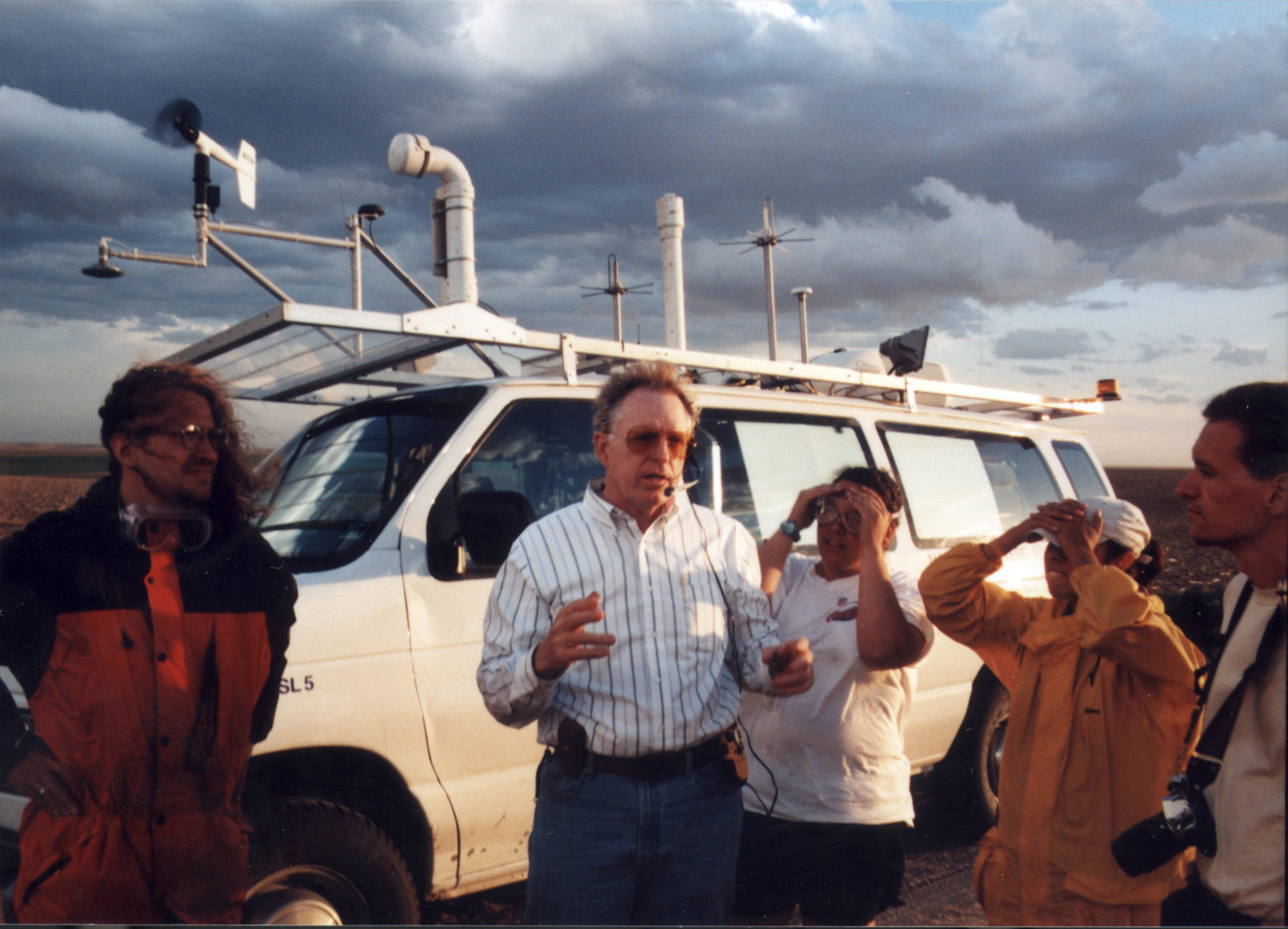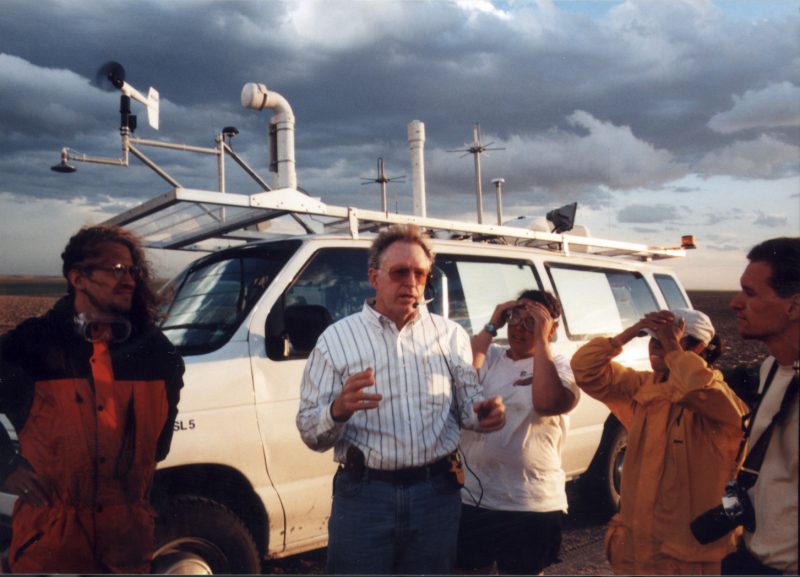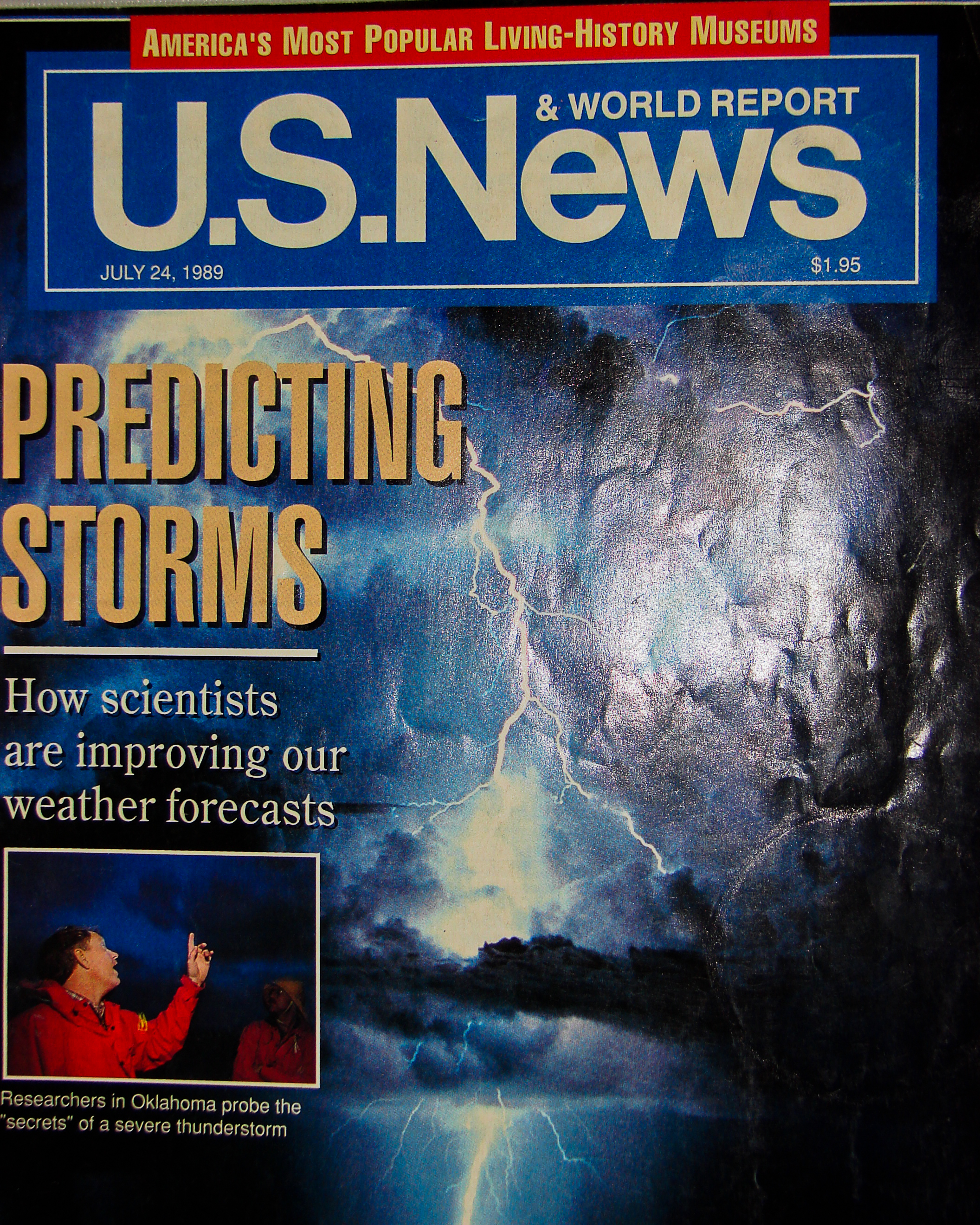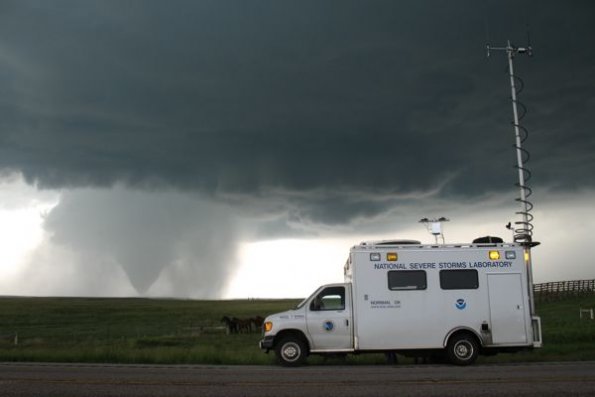
NSSL’s fleet of mobile research facilities (excluding mobile radars) have been under Dave’s watchful eye and direction for decades. Beginning with the mobile lab he helped build at NSSL out of an old Suburban truck in 1979, the armada now includes mobile ballooning facilities, field coordination vehicles, mobile mesonet vehicles and mobile radars. Dave saw the value in going out to find the storms rather than waiting for them to come to NSSL. Countless other scientists and research projects have benefited from the ability to measure temperature pressure, dew point, wind speed and direction, the electric field, and even return stroke velocities in a storm. “I get a great deal of satisfaction supporting other research,” he says.
Dave loves to be out “in the field,” and those who shared his passion for remote observations also appreciated his commitment to safety. He made sure every vehicle was up to date on maintenance and was equipped to accomplish missions in stormy situations. Dave’s attention to detail even included a tire gauge and flashlight in every glove compartment.
Dave endured a major setback in July, 2001 when a fire destroyed most of NSSL’s equipment storage facility, known as “the balloon barn.” A SMART-Radar, a brand new lightning mapping array system waiting to be installed, a new mobile laboratory, nine mobile mesonets, the shop, the entire collection of tools, three atmospheric sounding systems and a large inventory of balloons and radiosondes were lost.
NSSL’s Conrad Ziegler said, “Under Dave’s able leadership and with support from NSSL and NOAA OAR fire recovery funds, and the University of Oklahoma, the Field Observing Facilities Support (FOFS) team updated the mobile mesonet design, totally re-fabricated the mobile mesonet array, and had nine mobile mesonet platforms ready for the International H2O Project (IHOP) operations by the target date of May 15, 2002. In my opinion, the recovery of the FOFS mobile facilities (combined with and on top of the normal challenges of “simply” preparing an existing mobile facility for a field experiment) was a tour-de-force example of Dave’s incredibly effective leadership and his total commitment to support collaborative scientific research with the FOFS mobile facilities.” Dave and his FOFS team had fully recovered all NSSL’s losses from the fire in two years.



